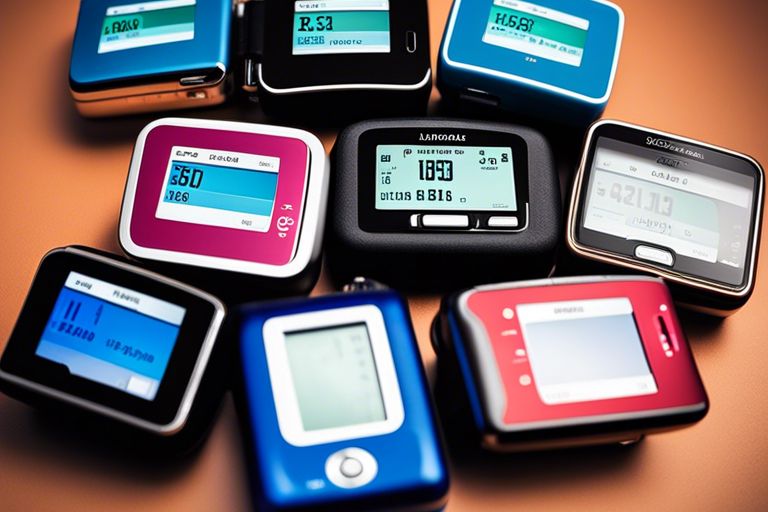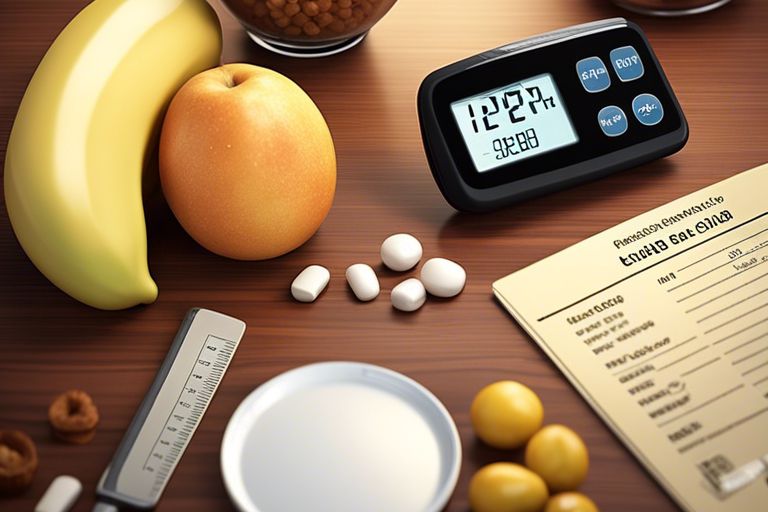Continuous Glucose Monitors (CGM) are revolutionising the way individuals manage their diabetes by providing real-time insights into blood sugar levels. These small devices offer numerous benefits, including improved glycemic control, reduced episodes of hypoglycaemia, and enhanced quality of life for diabetics. By constantly monitoring glucose levels, CGMs enable users to make immediate adjustments to their diet, exercise, and medication, helping them maintain steady blood sugar levels throughout the day. Understanding how these devices work is important for anyone looking to effectively manage their diabetes and prioritise their well-being. In this blog post, we will investigate into the benefits of Continuous Glucose Monitors and explore the intricate mechanisms behind their functionality.
Key Takeaways:
- Continuous Glucose Monitors (CGM) provide real-time glucose levels to help manage diabetes more effectively.
- CGM systems use a tiny sensor inserted under the skin to measure glucose levels in the interstitial fluid.
- Benefits of CGM include better glucose control, warning of high or low levels, and insights into trends over time.
- CGM devices can be integrated with insulin pumps to automate insulin delivery based on glucose levels.
- Regular calibration and understanding the device’s limitations are imperative for accurate glucose monitoring with CGM.
Understanding Continuous Glucose Monitors
Components and Design
Continuous Glucose Monitors (CGMs) consist of three main components: a sensor, transmitter, and receiver. The sensor is typically a small device inserted under the skin to measure glucose levels in the interstitial fluid. This data is then sent to the transmitter, which is attached to the sensor and wirelessly transmits real-time glucose readings to the receiver. The receiver, usually a handheld device or smartphone app, displays the glucose levels and provides alerts for high or low levels.
Mechanism of Action
The mechanism of action of CGMs involves the sensor detecting glucose levels in the interstitial fluid, which correlates with blood glucose levels. The sensor uses a process called enzymatic reactions to measure the glucose levels accurately. The transmitter then sends this data to the receiver, allowing users to monitor their glucose levels continuously without the need for frequent finger pricks. By providing real-time data, CGMs enable better management of blood sugar levels and help prevent dangerous fluctuations.
Interestingly, some CGMs can also predict future glucose trends based on the current data and provide insights to help users make informed decisions about their diet, exercise, and insulin dosages. This personalised approach to diabetes management has revolutionised the way individuals with diabetes can monitor and control their condition.
Benefits of Continuous Glucose Monitoring
Improved Blood Sugar Management
One of the significant benefits of continuous glucose monitoring is the improvement in blood sugar management. By providing real-time data on glucose levels, CGMs allow for timely interventions to prevent hypo- or hyperglycaemic episodes. This leads to better control of blood sugar levels, reducing the risk of long-term complications associated with diabetes.
Increased Awareness and Lifestyle Impact
Continuous glucose monitoring also offers the benefit of increased awareness and a positive lifestyle impact. Users become more mindful of their food choices, physical activity, and overall health habits when they can see how these factors affect their glucose levels throughout the day. This heightened awareness can lead to healthier lifestyle choices and improved overall well-being.
Utilizing CGM Data
Interpreting the Readings
Interpreting the readings from your Continuous Glucose Monitor (CGM) is crucial in managing your blood sugar levels effectively. Understanding the trends and patterns in your glucose levels can help you make informed decisions about your diet, exercise, and medication. It is important to monitor not just your current glucose level, but also how it is changing over time to prevent fluctuations that could lead to health complications.
Integration with Other Health Management Tools
Continuous Glucose Monitors are incredibly useful when integrated with other health management tools such as fitness trackers, smart scales, and food diaries. By combining data from these sources, you can get a comprehensive overview of how your lifestyle choices are impacting your blood sugar levels. This holistic approach to health management allows for more personalised and effective strategies to improve your overall well-being.
Challenges and Considerations
Accessibility and Cost
One of the main challenges with continuous glucose monitors (CGM) is the accessibility and cost associated with these devices. While CGMs have revolutionised diabetes management, they can be expensive and may not be easily accessible to everyone. This can pose a barrier for individuals who could benefit from CGM technology but are unable to afford it.
Understanding the Limitations
It is imperative for users of continuous glucose monitors to understand the limitations of these devices. CGMs may not always provide 100% accurate readings and can be affected by factors such as calibration errors, sensor lag, or interference from medications or other substances. It is crucial for users to be aware of these limitations and to use CGM data as a guide rather than as a definitive measure of blood glucose levels.
Continuous Glucose Monitors (CGM) – Benefits and How They Work
Continuous Glucose Monitors (CGM) offer a valuable tool for individuals managing diabetes by providing real-time information about their glucose levels. The ability to track glucose levels throughout the day helps in making informed decisions regarding diet, medication, and lifestyle choices. CGMs work by constantly monitoring glucose levels in the interstitial fluid, providing data that can help prevent dangerous fluctuations in blood sugar levels. With features like alerts for high or low glucose levels, CGMs enhance the quality of life for those with diabetes by offering convenience, accuracy, and peace of mind. Embracing this technology can lead to better glucose control, improved health outcomes, and a more proactive approach to diabetes management.
FAQ
Q: What is a Continuous Glucose Monitor (CGM)?
A: A Continuous Glucose Monitor (CGM) is a small device that continuously measures your blood glucose levels throughout the day and night.
Q: How does a Continuous Glucose Monitor (CGM) work?
A: A CGM works by inserting a tiny sensor under the skin to measure glucose levels in the interstitial fluid. The sensor communicates with a transmitter that sends data to a display device.
Q: What are the benefits of using a Continuous Glucose Monitor (CGM)?
A: The benefits of using a CGM include better control of blood glucose levels, early detection of highs and lows, reduced need for fingerstick tests, and improved quality of life.
Q: Who can benefit from using a Continuous Glucose Monitor (CGM)?
A: People with diabetes, especially those who require frequent blood glucose monitoring, can benefit from using a CGM to track their levels more conveniently and effectively.
Q: Are Continuous Glucose Monitors (CGMs) accurate?
A: CGMs are highly accurate in measuring glucose levels when calibrated properly and used according to manufacturer instructions. However, occasional calibration with fingerstick tests may still be required for optimal accuracy.




